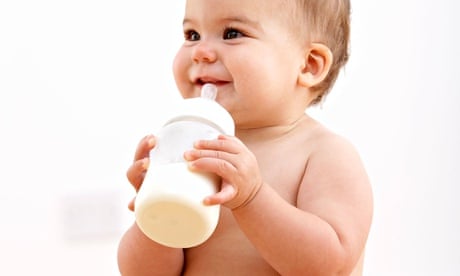Baby formula should be tailored for boys and girls to reflect the differences in milk that mothers produce depending on their baby's sex, researchers say.
Tests on mothers' milk in both monkeys and humans have showed that levels of fat, protein, vitamins, sugars, minerals and hormones vary enormously, but there is evidence that milk made for female and male babies is consistently different.
The make-up of the milk has a direct impact on the child's growth, but also on his or her behaviour and temperament, which may last for the rest of their life. Scientists suspect that breast milk may be tailored by nature to meet the different growth needs of the sexes.
The findings have led some researchers to suggest that baby formula should come in boy and girl formulations to match the differences seen in breast milk.
"We have good reason to be sceptical of a one-size-fits-all formula," said Prof Katie Hinde, an evolutionary biologist at Harvard University.
Speaking at the American Association for the Advancement of Science meeting in Chicago, Hinde described her work in rhesus monkeys that showed mothers produce milk with 35% more fat and protein for male babies, and even richer milk when the male was first-born.
But when mothers fed female babies, their milk was less fatty and had more calcium, probably to support the faster growth of their skeletons. Mothers produced more milk overall for females, and over the course of their breast feeding, they received the same amount of fat as the males.
"The recipes for milk for sons and daughters may be different, and the difference may be greater depending on where the mother is at in her reproductive career," said Hinde.
"Boys and girls have different developmental trajectories, so if they are not getting what they need, their development will not be optimal."
In another study, Hinde looked at levels of the stress hormone cortisol in mothers' milk and how they affected the babies' behaviour. The research builds on previous work in humans that found milk with higher concentrations of cortisol made baby girls more irritable and harder to calm down.
Hinde measured levels of cortisol in breast milk for 108 baby monkeys at one month old, and later when the animals were three or four months old. She found some subtle but important differences. Female monkeys became more nervous when cortisol was high early on in their breast feeding. Male monkeys behaved more nervously when cortisol rose over time.
Taken together, the work suggests that mothers make breast milk differently for male and female babies, and that male and females respond to the milk they drink in their own ways.
Hinde said far more work was needed to understand not only how and why milk varies for boys and girls, but also why constituents of milk affect them in different ways.






Comments (…)
Sign in or create your Guardian account to join the discussion